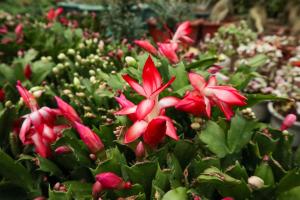Are Hydrangeas Good Indoor Plants?
Hydrangeas are a popular flowering plant that add a burst of color to any garden or landscape. But, can they thrive indoors? The answer is yes! Hydrangeas can be great indoor plants if you provide them with the right environment, care, and attention.
The Benefits of Growing Hydrangeas Indoors
One of the greatest benefits of growing hydrangeas indoors is that they can brighten up your interior space with their beautifully colored, fluffy blooms. They come in a range of colors, including pink, blue, white, and purple, and can add a pop of color to any room. Additionally, hydrangeas can help to purify the air and improve indoor air quality. They are also relatively easy to care for and can be a great option for beginner gardeners.
Choosing the Right Variety of Hydrangea
When selecting a hydrangea for indoor growing, it is important to consider the variety. Some hydrangeas are better suited for indoor growing than others. For example, the mophead hydrangea (Hydrangea macrophylla) is a popular choice for indoor growing because it is compact and can easily adapt to indoor environments. The lacecap hydrangea (Hydrangea serrata) is another good choice for indoor growing because it is more tolerant of cooler indoor temperatures. Other varieties, such as the panicle hydrangea (Hydrangea paniculata), may be too large or require too much light for successful indoor growing.
Providing the Right Environment for Hydrangeas
In order to grow hydrangeas indoors, it is important to provide them with the right environment. This includes choosing the right pot and soil, as well as providing adequate light and water. Hydrangeas prefer well-draining soil that is rich in organic matter. They also require plenty of sunlight, ideally 4-6 hours per day. If you don’t have a window that provides enough light, you may need to supplement with artificial light. In addition, hydrangeas require consistent watering, but do not like to be over-watered. It is important to keep the soil moist, but not waterlogged.
Maintaining and Caring for Indoor Hydrangeas
Once your hydrangea is established indoors, it is important to maintain and care for it properly to ensure it thrives. This includes deadheading, or removing spent blooms, and pruning to encourage new growth. It is also important to fertilize regularly, using a balanced fertilizer designed for flowering plants. Avoid fertilizing during the winter months, when hydrangeas are dormant. Finally, be on the lookout for common indoor plant pests, such as spider mites and aphids, and treat them promptly to avoid infestation.
In Conclusion
If you are looking for a beautiful and easy-to-care-for indoor plant, hydrangeas can be an excellent choice! However, it is important to choose the right variety and provide the right environment to ensure success. By following these tips and providing proper care, you can enjoy the beauty of hydrangeas all year round, even indoors.

 how many times do yo...
how many times do yo... how many planted tre...
how many planted tre... how many pine trees ...
how many pine trees ... how many pecan trees...
how many pecan trees... how many plants comp...
how many plants comp... how many plants can ...
how many plants can ... how many plants and ...
how many plants and ... how many pepper plan...
how many pepper plan...






























